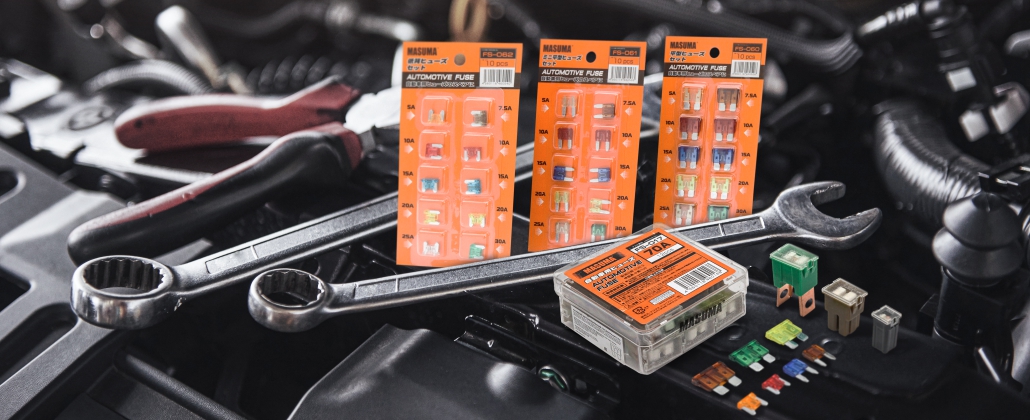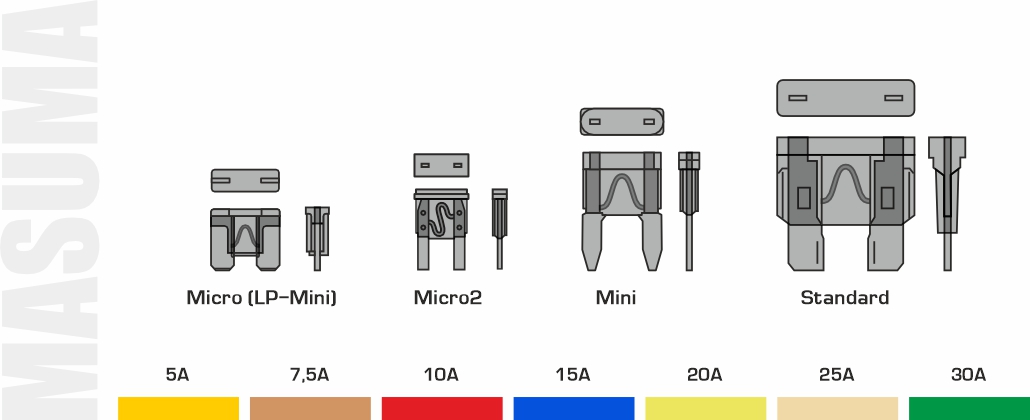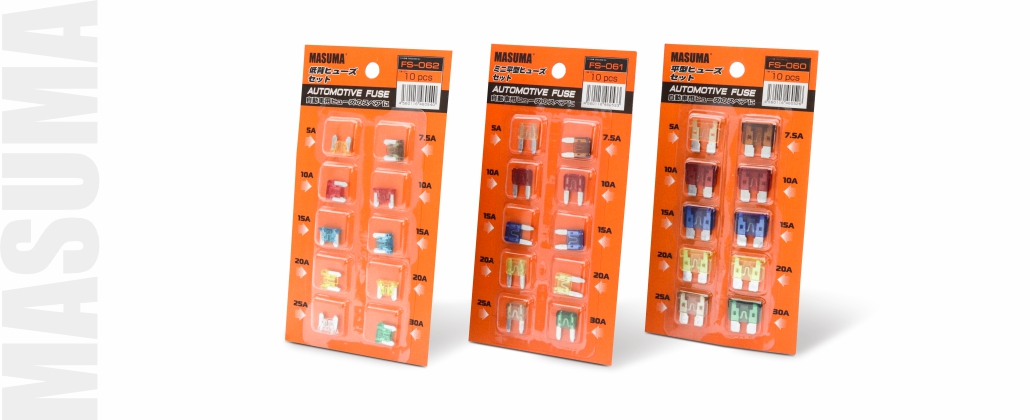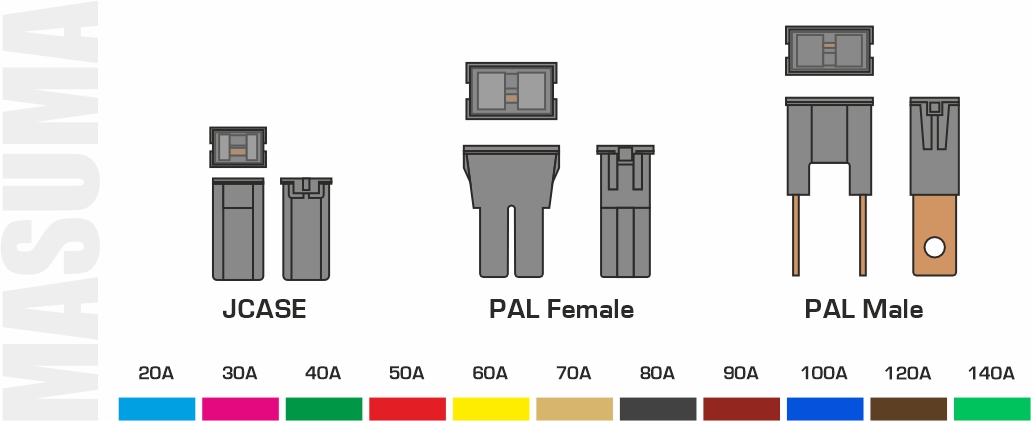
Fuses are an essential part of any emergency repair kit in a car’s glove compartment. These components are compact, inexpensive, and can be replaced in a minute by any driver, yet their failure can immobilize a vehicle at the worst possible moment.
How a Fuse Works
A fuse is a simple device designed to protect electrical circuits. When the current exceeds the rated limit, the fuse blows, breaking the circuit and safeguarding the vehicle’s electrical system—or even the entire car—from fire hazards.
The core of a fuse is a fusible metal strip. In low-current blade fuses, Masuma uses zinc, while power fuses incorporate a zinc-copper alloy. These metals have a positive temperature coefficient of resistance, meaning that when the current surpasses the rated value, both the temperature and resistance of the fuse element rise sharply, causing it to break. In short, a fuse’s primary job is to burn out at the right time.
Types of Automotive Fuses
Modern vehicles primarily use blade-type (glow) fuses and cartridge-type (hi-amp) fuses in various form factors. Apart from size, a fuse’s key characteristic is its rated current, which is indicated not only by numerical markings but also by the color of the housing.
The Four Most Common Blade Fuse Sizes:
- Standard (Regular)
- Mini
- Micro (Low-Profile Mini)
- Micro2
Generally, the newer the vehicle, the smaller the fuses it uses.

Currently, Masuma produces three types of blade fuses (Standard, Mini, and Micro) with ratings from 5A to 30A. The Micro2 size will be added to the lineup soon. Masuma fuses are sold in packs of 100, but retail stores typically offer them individually. However, for car owners, a more convenient option is a set of 10 fuses of different ratings within a single fuse type, ensuring compatibility with a specific vehicle.

Masuma Fuse Sets:
Masuma Cartridge Fuses: High-Current Protection
Masuma also manufactures cartridge (hi-amp) fuses with ratings from 20A to 140A in PAL (female, male) and JCASE formats. These fuses protect circuits with high-power consumers, such as:
- Electric motors
- Heated components
- ABS systems
- Other high-load electrical systems
Cartridge fuses are available in packs of 12 or 20, but can also be purchased individually in retail stores.

Just like blade fuses, cartridge fuse housings are color-coded based on their rated current. This color coding remains useful even if the numerical marking wears off over time.
Safety Precautions
When a fuse blows, some drivers attempt to restore the circuit using a makeshift "bypass"—a piece of wire or even a paperclip. This is highly dangerous because it eliminates circuit protection. If the fuse failed due to an electrical fault, bypassing it can lead to serious damage to costly vehicle components—or even cause a fire.
Important Fuse Safety Rules:
- Always use a fuse with the correct rating for the circuit. Never replace it with the first one you find.
- A weak fuse will blow frequently, while an overrated one won’t protect the system.
- If you buy a used vehicle, check that all fuses match the recommended ratings. You can find this information inside the fuse box cover or in the vehicle’s owner’s manual.



















